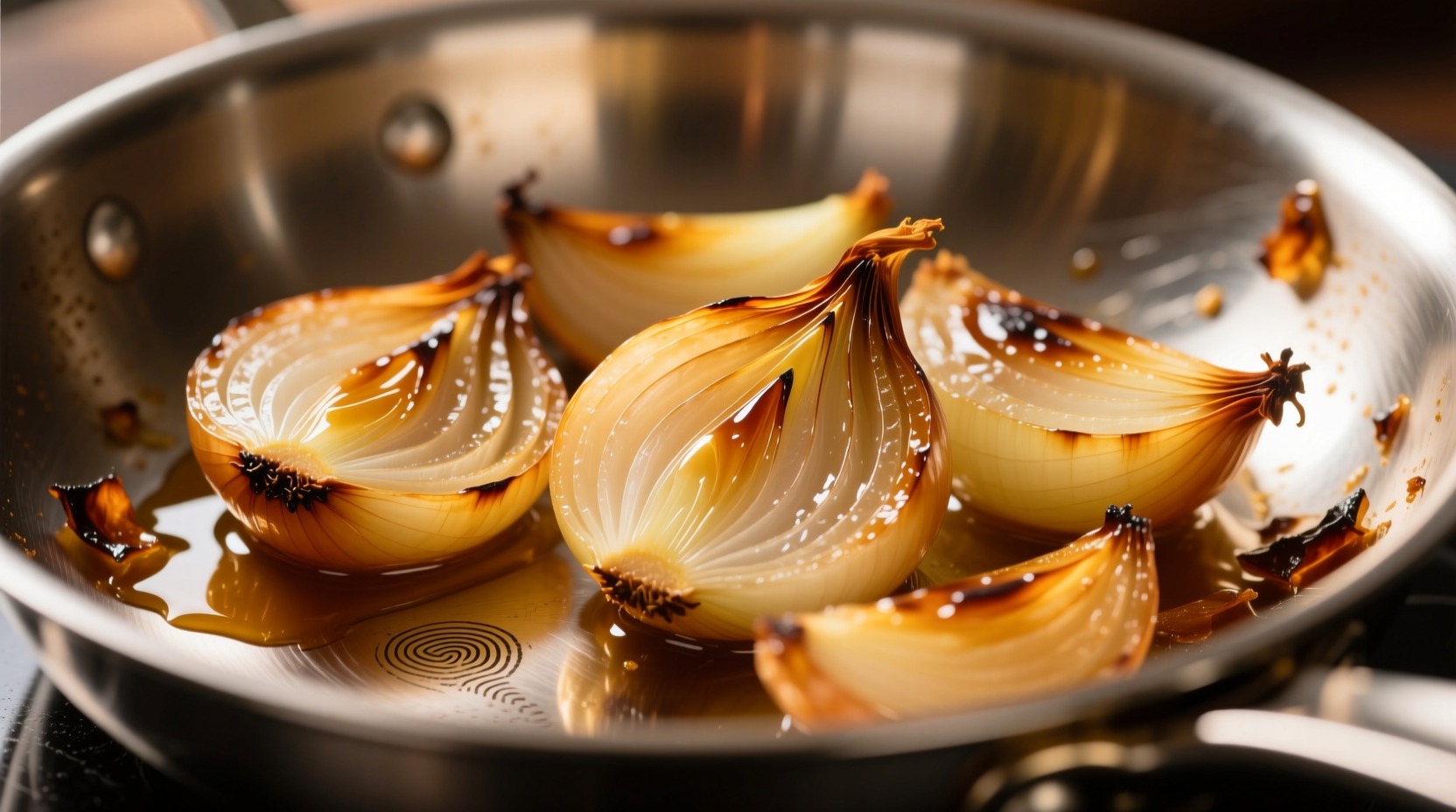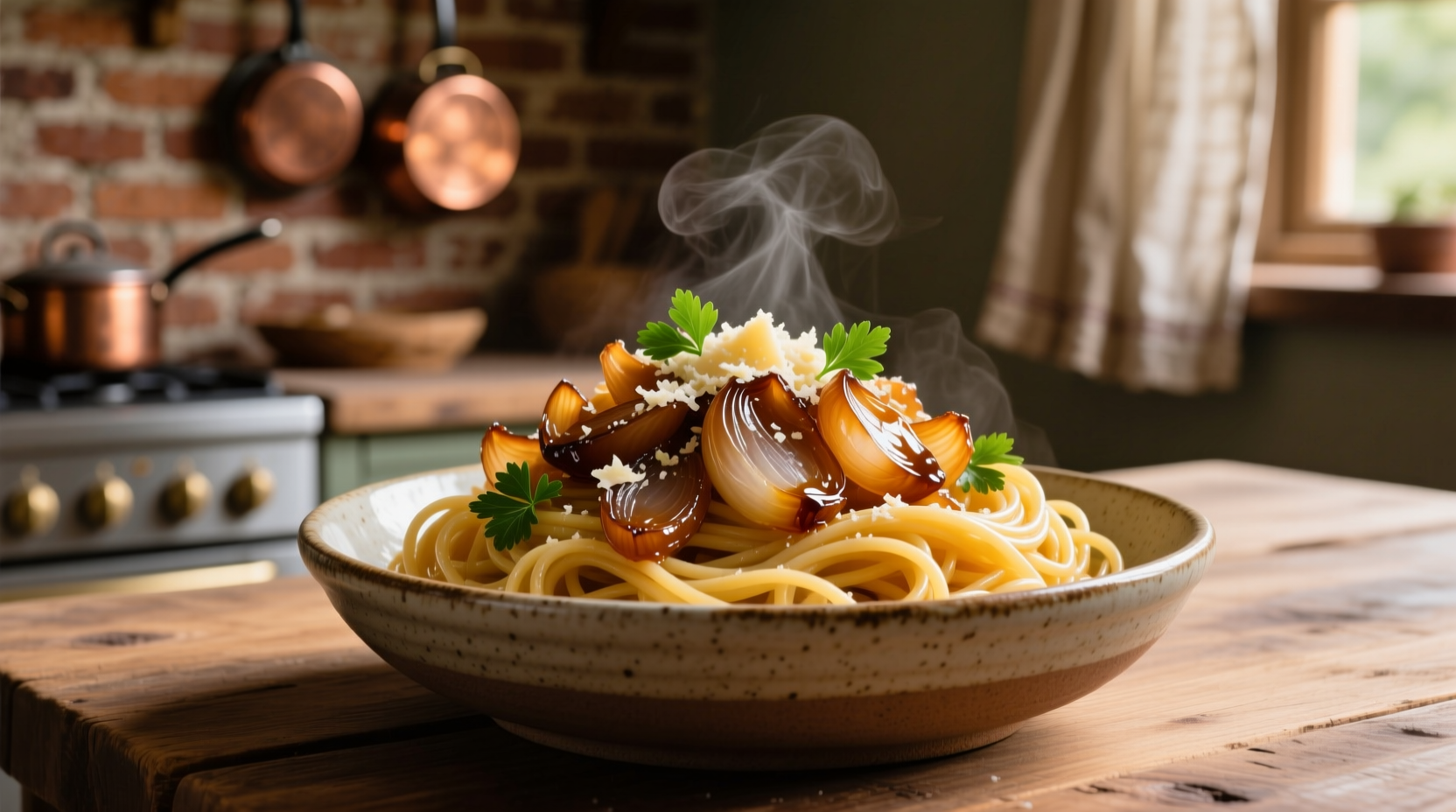The perfect caramelized onion pasta combines sweet, deeply flavored onions with the right pasta shape and simple enhancements for a restaurant-quality dish in under 45 minutes. This guide reveals the precise caramelization technique, ideal pasta pairings, and professional chef secrets to create a balanced, flavorful meal without cream or excessive cheese.
Nothing transforms humble ingredients into culinary magic quite like properly caramelized onions folded into warm pasta. As a chef who's mastered this technique across Michelin-starred kitchens and home cooking demonstrations, I've discovered that the secret isn't complicated equipment or rare ingredients—it's understanding the science of caramelization and applying precise timing. In just 30-40 minutes, you can create a dish that appears complex but relies on fundamental cooking principles anyone can master.
The Science Behind Perfect Caramelized Onions
Caramelization isn't just browning—it's a complex chemical reaction where natural sugars in onions break down at specific temperatures. When onions cook slowly between 230-320°F (110-160°C), their sucrose transforms into over 400 new compounds that create rich, sweet, nutty flavors. Rushing this process creates bitter, burnt results rather than the deep golden-brown sweetness essential for exceptional pasta.
| Caramelization Stage | Time Required | Visual Cues | Flavor Profile |
|---|---|---|---|
| Initial Softening | 5-7 minutes | Translucent, no color change | Mild onion flavor, slight sweetness |
| Early Caramelization | 10-15 minutes | Light golden edges | Noticeable sweetness developing |
| Mid Caramelization | 20-25 minutes | Uniform light brown | Balanced sweet-savory notes |
| Perfect Caramelization | 30-40 minutes | Deep golden brown, jam-like consistency | Rich umami, complex sweetness, no bitterness |
Choosing Your Onion Foundation
Not all onions work equally well for caramelized onion pasta. While yellow onions remain the professional standard for their balanced sweetness and structure, understanding your options helps match the dish to your occasion:
- Yellow onions (8-10% sugar content) - Ideal for most applications, developing complex flavors through slow cooking
- Sweet onions (Vidalia, Walla Walla) - Higher water content requires longer cooking but creates exceptional sweetness
- Red onions - Retain some sharpness even when caramelized, best for visual contrast in finished dishes
- Shallots - Intense flavor concentration, best used in combination with yellow onions

The Essential Caramelization Technique
Follow these precise steps for consistently perfect results:
- Prep correctly: Slice onions uniformly (1/8-inch thick) using a sharp knife or mandoline. Uneven slices cook at different rates.
- Start with the right fat: Combine 1 tablespoon butter with 2 tablespoons olive oil in a stainless steel or cast iron pan (nonstick doesn't promote proper browning).
- Control the heat: Medium-low is crucial—too high burns, too low steams. Adjust as needed to maintain gentle sizzle without smoking.
- Add strategic moisture: After 15 minutes, deglaze with 1/4 cup dry white wine or vegetable broth, scraping browned bits from the pan bottom.
- Finish with acid: In the final 5 minutes, add 1 teaspoon balsamic vinegar or sherry vinegar to balance sweetness and enhance complexity.
Pasta Shape Science: Matching Geometry to Sauce
The right pasta shape isn't just tradition—it's food science. Caramelized onion sauce works best with shapes that trap and hold the sticky, jam-like consistency:
- Pappardelle - Wide ribbons capture sauce in every bite (ideal for cream-free versions)
- Rigatoni - Tubes hold concentrated pockets of flavor
- Fusilli - Spirals create perfect sauce pockets
- Orecchiette - "Little ears" cradle the onion mixture beautifully
Avoid delicate shapes like angel hair that can't support the substantial sauce. For authentic texture, cook pasta 1 minute less than package directions, reserving 1 cup starchy water before draining.
Building Flavor Layers Without Cream
Professional kitchens achieve luxurious texture without dairy through these techniques:
- Emulsify with pasta water: The starch in reserved cooking water binds sauce components naturally
- Add umami boosters: 1 teaspoon soy sauce or 2 finely chopped anchovies (dissolves completely) enhances depth
- Finish with quality cheese: Parmigiano-Reggiano adds saltiness without overwhelming (use 1/4 cup grated per serving)
- Incorporate fresh herbs: Chives or parsley added at the end provide brightness against rich onions
Common Mistakes and How to Fix Them
Even experienced cooks encounter these caramelized onion pasta pitfalls:
- Burnt onions: Caused by high heat or insufficient fat. Solution: Start over—burnt flavor can't be salvaged.
- Watery sauce: Onions released too much moisture. Solution: Increase heat slightly and cook 5-7 minutes longer to evaporate excess liquid.
- Dry, clumpy pasta: Insufficient sauce emulsification. Solution: Add reserved pasta water 1 tablespoon at a time while tossing.
- Overpowering sweetness: Onions caramelized too long. Solution: Balance with lemon zest or additional vinegar.
Dietary Adaptations That Don't Compromise Flavor
This dish adapts beautifully to various dietary needs when approached thoughtfully:
- Gluten-free: Use bronze-die extruded GF pasta (Barilla or Jovial brands) for better sauce adhesion
- Vegan: Replace butter with extra-virgin olive oil and use nutritional yeast instead of cheese
- Low-sodium: Omit added salt during caramelization; rely on natural onion sweetness and finish with lemon juice
When This Dish Shines (And When to Choose Something Else)
Understanding context boundaries ensures culinary success:
- Ideal for: Casual weeknight dinners, vegetarian main courses, wine pairing occasions, and showcasing seasonal onions
- Less suitable for: Quick 20-minute meals (caramelization requires time), children's palates sensitive to complex flavors, or when serving multiple courses requiring lighter dishes
- Seasonal consideration: Spring and summer onions create milder caramelized results; fall and winter onions develop deeper, sweeter flavors
Perfect Pairings and Presentation
Elevate your caramelized onion pasta with these professional finishing touches:
- Texture contrast: Top with toasted pine nuts or breadcrumbs for crunch
- Color accent: A sprinkle of fresh chives or microgreens adds visual appeal
- Wine pairing: Medium-bodied reds like Chianti or earthy whites like Pinot Grigio complement the sweetness
- Serving temperature: Always serve immediately—caramelized onion pasta cools and thickens rapidly











 浙公网安备
33010002000092号
浙公网安备
33010002000092号 浙B2-20120091-4
浙B2-20120091-4